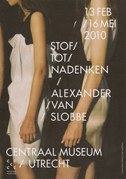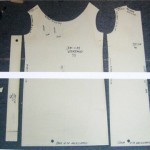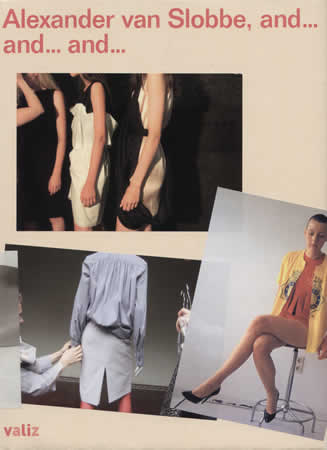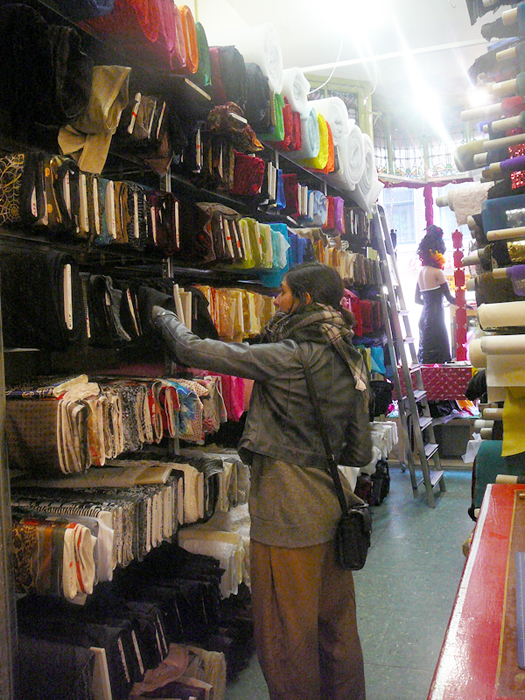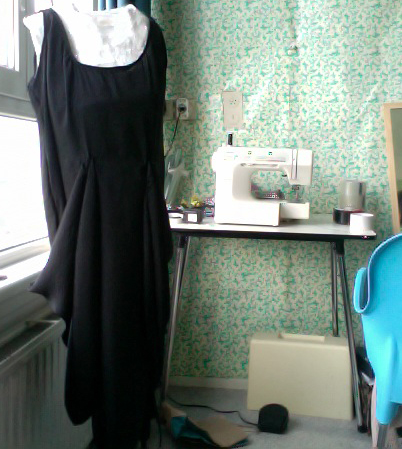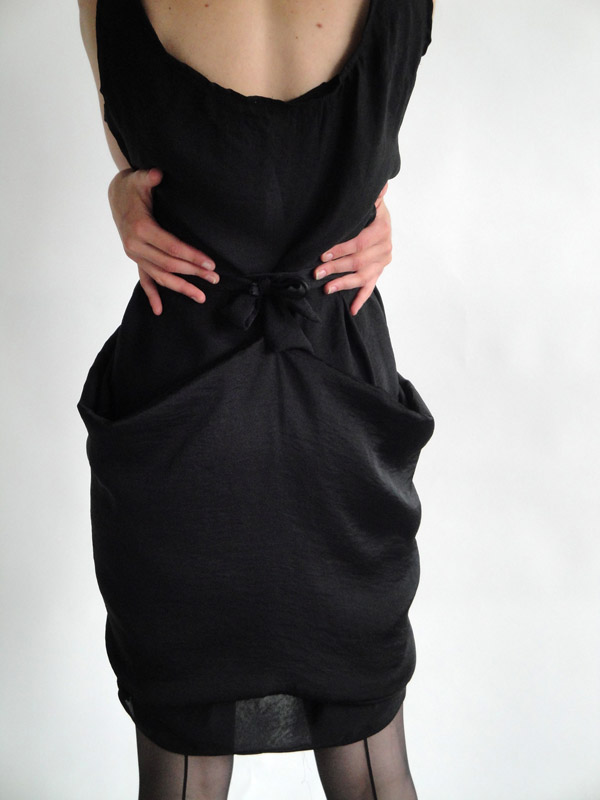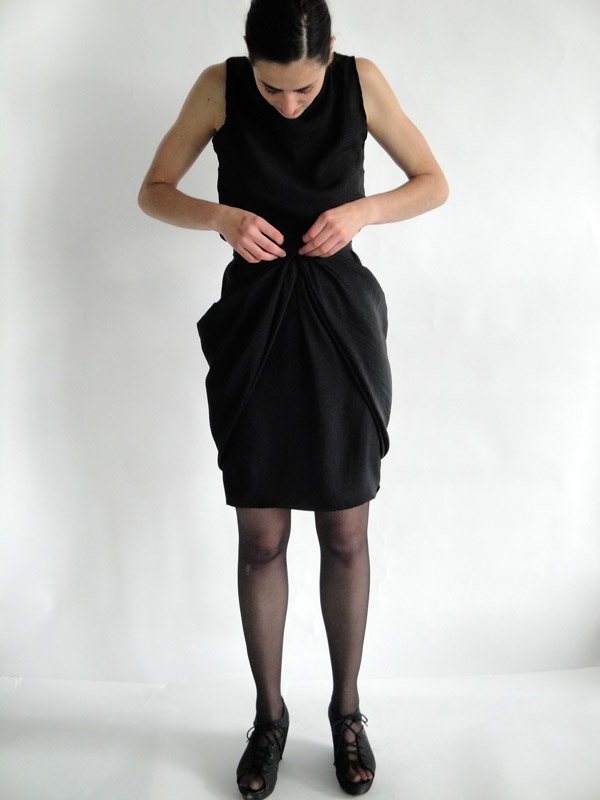This spring I went to visit the exhibition “fashion for thought” at the Centraal museum in Utrecht. The exhibition was containing the work of fashion designer Alexander van Slobbe.
In the end of this interesting, and well curated exhibition, Alexander van Slobbe showed one of his patterns for a dress, with all the materials needed to copy it. I decided to make a project out of this dress and went right after the exhibition to buy fabric.
I chose a black, transparent fabric for my dress.
Alexander Van Slobbe works a lot with the fabric, not forcing it into any direction, on the contrary, his way of designing really follows the direction and weaving in the textile he uses.
In my reinvention of the design of Alexander Van Slobbe, I would like to work, like Alexander van Slobbe, by draping the fabric. To find inspiration, I therefor looked up two of my favourite designers, Diana Orving, who works a lot with draping, and “House of Dagmar”, a designer collective who´s design is based on stitching.
left: Diana Orving, middle and right: House of Dagmar (www.dianaorving.com; www.houseofdagmar.se)
When I looked at the patterns I copied, I saw that the size was to big for me. Therefor, so that I can more easily work with draping, and to make the dress my size, I started to make a tailor’s dummy.
Instructions how to make your own tailor´s dummy
Material: tape, scissor, plaster bandage
-
wrap your self in tape. Not to tight
-
cut it open
-
tape it together again
-
cover it with plaster
while starting the cutting process, I realized what a difficult fabric I had chosen. It was to thin. When making the hem, and cutting it, thin fabric gets really easily wrinkled. I had to put a cotton ribbon between two layers of the fabric to be able to complete the hem, both in the sleeves and the collar. After stitching and unstitching several times, i could finally start with the drapings.
The most problematic part was the making of the collar. I called my parents for advice. My mother told me that her mother used to cut very thin fabric on the diagonal when making a collar. By doing so, the weeving of the fabric lyes in the “wrong” direction, and therefor the fabric stays in place.
My grandmother would be horrified if she could see my way of working with the dress with the unregular stitches and the cutting in the fabric. She was a teacher for dressmakers and always knew who should wear what and how. She used to design clothing from private orders by rich ladies in the 50s. Actually my other grandmother, the mother of my dad, was also working within fashion. She was a sewer, and her sister a fashion designer. But I guess I lack the patience and interest in mathematics to work with sewing. On the other hand, the fashion designer Diana Orving, sketches directly on the dummy. She didn’t have any training in pattern construction. She just began by putting fabric on a dummy and register the way the fabric was falling.
I don´t know why I like drapings so much. Maby I see it as reaction against garnment wich only aims to bring out the body, clothes that are not interplaying with the fabric nor with the person who weares it. This kind of fashion is very excluding. It´s only made for people who are happy with their body, or only think that they are beutifull if they show their body parts because of objectification. But working with drapings goes further than that. It makes us aware of the importance of the fabric. It makes us see the handicraft and how gravitation creating shapes through the fabric. What Alexander van Slobbe does, is that he manages to balance the drapings through simple lines, forms and colours. It never becomes to much.
By choosing a black, thin fabric I tryed to do the same. The belt in the waist, and the narrowing of the lower part of the dress brings out the classical shape of the woman body.
By making the décolletage in the back more low-cut than in the front, the dress becomes sensual without revealing to much.
So this is the result. Now it´s only Me, You and Alexander Van Slobbe!
